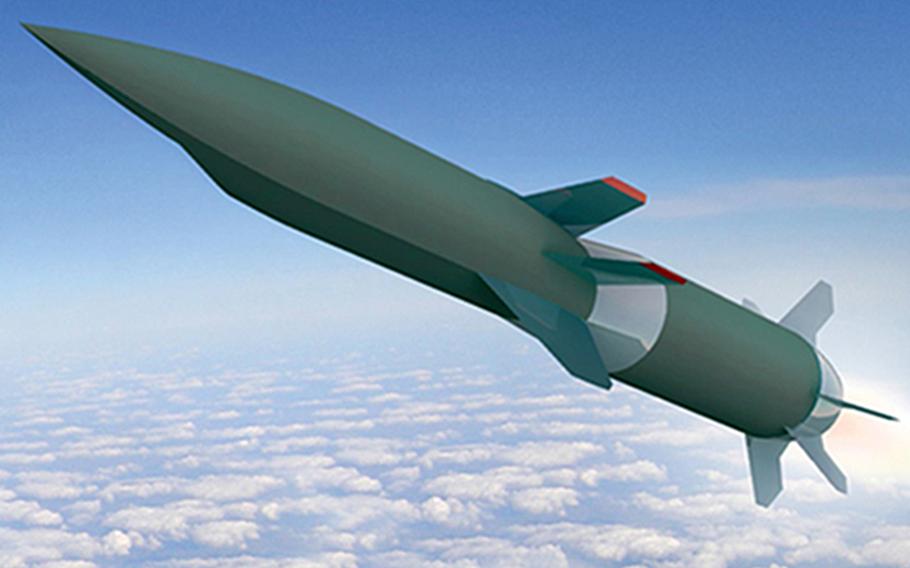
An artist’s concept of Hypersonic Air-breathing Weapons Concept missile, or HAWC. The military successfully tested the hypersonic missile recently, bringing it a step closer to having an operational version of the weapon, developers said. (Defense Advanced Research Projects Agency)
The U.S. has successfully tested another hypersonic missile, bringing the military a step closer to having an operational version of the weapon in its arsenal, developers said.
Hypersonic missiles travel at least five times the speed of sound and are being developed to strike targets from extremely long distances on short notice.
The U.S. has been under pressure to establish its hypersonic capabilities after Chinese and Russian announcements of successful tests and growing concern that its program is lagging behind those of its adversaries.
Completed in January at an unspecified location, the test was part of a project known as the Hypersonic Air-breathing Weapons Concept, or HAWC, developed by the Air Force and the Defense Advanced Research Projects Agency, a DARPA statement Monday said.
HAWC missiles use air-breathing engines to stay aloft, allowing them to fly at lower altitudes and maneuver over distances to destroy targets with kinetic energy rather than explosive warheads.
The Lockheed Martin missile, with its Aerojet Rocketdyne scramjet engine, was launched from an Air Force B-52 bomber, the statement said, adding that it exceeded Mach 5, which is roughly 3,800 mph, and flew over 300 nautical miles at more than 60,000 feet in altitude.
It followed a similar test in March and an initial HAWC test in September 2021 that used a Raytheon Technologies missile with a Northrop Grumman scramjet engine.
“This month’s flight added an exclamation point to the most successful hypersonic airbreathing flight test program in U.S. history,” Walter Price, an Air Force deputy for the HAWC program, was quoted in Monday’s statement as saying.
Overall, it was the fourth successful flight of the HAWC program since 2021.
Tests of other hypersonic systems at times haven’t been so lucky. In June, a test of the Common Hypersonic Glide Body, a joint venture between the Navy and Army, failed because of an anomaly, according to the Pentagon.
The AGM-183A Air-launched Rapid Response Weapon, a hypersonic air-to-ground missile planned for use by the Air Force, suffered a series of failures when testing began a few years ago, but it has recently seen more success.
Hypersonic missiles would be harder for enemies to detect and avoid compared with conventional anti-ballistic missiles. But making them controllable and practical are continuing obstacles.
Officials say the data gathered from this month’s test are still being analyzed and will be used to advance the program to a more rigorous phase.